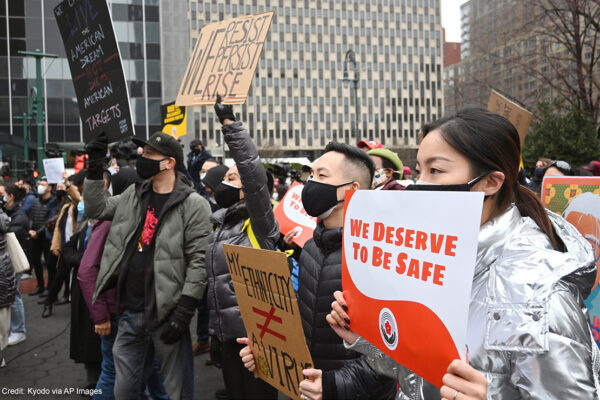The model minority myth originated in 1966 in a New York Times article entitled “Success Story, Japanese-American Style.” The article posited that Japanese Americans had achieved success in “sharp contrast to lower class Americans, whether white or negro” [1]. It made the case that “the Japanese … could climb over the highest barriers [America’s] racists were able to fashion.” The purpose was not to laud Japanese Americans or Asian Americans but rather to attempt to decouple the racism and mistreatment directed at other communities of color, particularly Black communities, from the resulting weaker social and economic mobility. That myth – racism can not be blamed for one community's travails if another community was able to overcome those barriers – was the logic suggested. That myth continues today.
I focus on this issue through a unique lens, being both South Asian and Muslim in an America that has had a complicated relationship with brown-skinned Muslim people. Many of the stereotyped characteristics associated with model minorities—higher household incomes, educational attainment, and concentration in lucrative work fields—do apply to South Asian communities like mine. According to 2020 census data, Indian, Pakistani, Bangladeshi, and Sri Lankan Americans all have higher median household incomes and college graduation rates than the national average. [2]. Indians in particular account for “[n]ine percent of doctors in the United States." [2].
Some South Asian Muslims have internalized the model minority archetype, as many Asian immigrants have, hoping it can be a means of acceptance into white mainstream society and a way to create stability for their communities and their children [3]. For South Asian Muslims in particular, the pressure to appear “unthreatening” adds another layer of self-policing beyond the expectations of high educational attainment and confinement to specific fields of work [4]. Despite economic success, a “collective precariousness” is documented among South Asian Muslim Americans, “an insecurity akin to that felt by those un(der)employed” [5]. This illuminates the reality that leaning into “model minority” status can not bring about the kinds of stability and inclusion South Asian Muslim Americans seek.
Our model minority status has not, and will not, protect our communities from abuse when it is politically expedient. The most recent example being the scapegoating of China for the coronavirus pandemic and the uptick in hate crimes against Asian Americans that followed [6]. The Muslim American community, in particular, is no stranger to this reality, given the post-9/11 increase in surveillance and violations of Muslim Americans’ civil liberties [6]. In fact, several of the methods used were the targets of lawsuits, resulting in settlements and admissions of violations of constitutionally protected activities [6, 7, 8].
For too long, Asian Americans have believed that if we internalize the model minority myth, we will not only find success in this country, but our communities will be safe from attack. But this is false. Asian American communities are regularly scapegoated, left legislatively unprotected from overreaching civil liberties violations, and, oftentimes, face physical threats of violence because of these factors.
It’s time for Asian American communities to break out of the confines of the model minority myth. It’s time to unite and organize for more representation in this country, to be more vocal in politics, and to support movements for equality and other communities of color who face systemic oppression. As civil rights activist Fannie Lou Hamer once said, “Nobody's free until everybody's free.” We do not have to compete with other communities of color for inclusion in this country. We should join together, with our allies, in the fight for dignity and respect for all underrepresented and marginalized communities.

